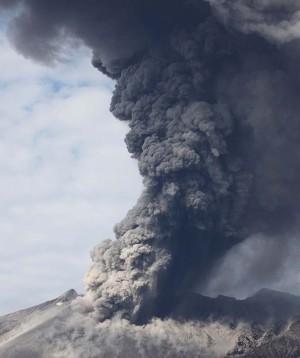Articles Menu
24 July 2019
The end of pre-industrial climate — the baseline for assessing the extent of human-induced warming today — is not easy to pinpoint in time. Regardless, the past decades stand out from two millennia of climate fluctuations.

Climate variability during the past two millennia — the Common Era — has been a subject of intense debate for more than two decades. The early notion of a hockey-stick-shaped temperature record, with little variability and cool temperatures in the early part of the record (the ‘handle’), followed by a steep rise in temperature over the final 150 years or so1, has long been replaced by a much more nuanced view2. We now know that the temperature record of the Common Era is characterized by significant ups and downs on timescales from decades to centuries. The picture is now refined further, based on the latest reconstructions and simulations: in one Article, the PAGES 2k Consortium find that rates of warming over two decades or longer were fastest in the late 20th century and that volcanic eruptions exerted the dominant influence on pre-industrial climate; in a second Article, Neukom et al. note that the late 20th century is unique in its spatial coherence of warming; and in a third Article, Brönnimann et al. report that global temperatures fluctuated substantially in the early to mid-1800s, at the transition from mostly natural to substantial anthropogenic forcing, because the climate system was recovering from volcanic cooling.
Global-mean surface temperatures during the Common Era varied between one millennium and the next as well as from decade to decade (and at all intermediate timescales). Using seven different statistical techniques to evaluate their data, and comparing with model-based reconstructions, the PAGES 2k Consortium find substantial differences — and hence uncertainty — in the global-mean variations over centuries and longer between the various temperature records. However, agreement over the shorter term of several decades is surprisingly good. Looking into the causes of these multi-decadal fluctuations for the period 1300 to 1800 AD, they note that volcanic eruptions play a dominant role, and have a sharp and clearly attributable global-mean effect on temperatures. Early changes in measured atmospheric greenhouse gases concentrations — which arguably may include a contribution from early human activity3 — are secondary, and solar variability does not emerge as a significant factor. The 20th century, not unexpectedly, is unique: it has the largest global-mean warming trends over periods of at least 20 years.
A different, complementary measure of the intensity of change is global synchronicity. Investigating global coherence of regional temperature variations, rather than simply averaging over the globe, Neukom and colleagues point out that temperatures did not rise and fall everywhere in step. Specifically, early cool or warm intervals that lasted for centuries peaked at different times in different regions. The Little Ice Age, for example, was at its height in the 15th century in the Pacific Ocean, the 17th century in Europe and in the 19th century elsewhere. Generally, any pre-industrial 51-year peaks or troughs in temperature could be detected in no more than half of the globe, in most reconstructions. Again, the late 20th century stands out: in the most recent decades, record-high temperatures are found simultaneously over almost the entire globe.
Zooming in on the early 19th century, Brönnimann and colleagues investigate how probably at least five large tropical eruptions, including that of Tambora in April 1815, affected global climate. The period covers the touchpoint between the largely natural variability of the pre-industrial period and the era of significant human influence. Through heat exchange between the oceans and atmosphere, volcanic cooling persisted; slower feedback effects further propagated the hit that the system had taken. Brönnimann et al. reveal the impacts of the eruptions: decades of weakened monsoons in Africa, India and Australia; a southward shift in the location of the storm track over the Atlantic Ocean and Europe; and glacier advances in the European Alps.
This period of climatic turmoil coincided not only with the accelerating influence of human activities on global temperatures through the Industrial Revolution — the mid-19th century also marks the beginning of systematic instrumental measurements of surface temperature. Instrumental observations represent a huge step up in accuracy, but were initially spatially sparse. Tree rings, sediment cores and other proxies all have their own seasonal and other biases as recorders of temperature, given the diversity in exactly what they respond to. Such a step up in measurement accuracy requires extra care when attempting to identify trends in the record that span the periods before and after.
For calculating how much carbon dioxide we can still emit into the atmosphere without violating the temperature targets of the Paris Agreement, the point in time that we consider as representative of pre-industrial conditions makes a potentially crucial difference4. As such, the question of how much of the 19th-century warming is attributable to a recovery from volcanic cooling versus the influence of human activity, and whether there are any artefacts from splicing together proxy-based records and instrumental observations, may have unexpected policy implications.
It is clear that the late 20th century stands out in the context of the Common Era. Disentangling exactly where we should set the boundary between natural, pre-industrial climate and the period of substantial human influence is likely to remain challenging for some time to come.
References
Mann, M. E., Bradley, R. S. & Hughes, M. K. Nature 392, 779–787 (1998).
Jansen, E. et al. in Climate Change 2007: The Physical Science Basis (eds Solomon, S. et al.) Ch. 6 (Cambridge Univ. Press, 2007).
Koch, A., Brierley, C., Maslin, M. M. & Lewis, S. L. Quat. Sci. Rev.207, 13–36 (2019).
Schurer, A. P. et al. Nat. Geosci. 11, 220–221 (2018).